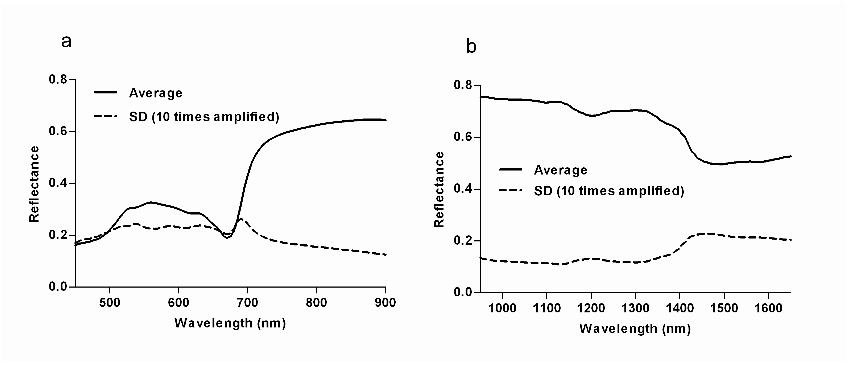Abstract: The feasibility of using spectral reflectance information in the visible—near infrared (400–1,000 nm) region to estimate moisture content (gW/gDM) and chromaticity (CIELAB) of apple slices was investigated during convection drying. Apple slices were pretreated with hot water blanching (50 and 70°C), acid application (citric and ascorbic), and combinations thereof before drying at 50 and 70°C. Prediction models for the space-averaged spectral reflectance curves were built using the partial least square regression method. A three-component partial least square regression (PLSR) model satisfied the minimal root mean square error (RMSE) criterion for predicting moisture content (avg. RMSEP = 0.13, r2 = 0.99); importantly, the critical wavelengths remained the same across all pretreatments (540, 817, 977 nm). Similarly, PLSR modeling showed that the optimal set of wavelengths (in terms of RMSE) were invariant across pretreatment for CIELAB a* prediction (543, 966 nm) and CIELAB b* prediction (510, 664, 714, 914, 969 nm). The stability of the information content of these wavelengths across pretreatments indicates their independence of color changes. Additionally, the spatial information in the hyperspectral images was exploited to visualize the performance of the predictive models by pseudo-coloring their values for each pixel in a single apple slice across different drying times. This visualization of spatial distribution of predicted moisture content and chromaticity changes shows significant potential for use in online monitoring of the drying process.




